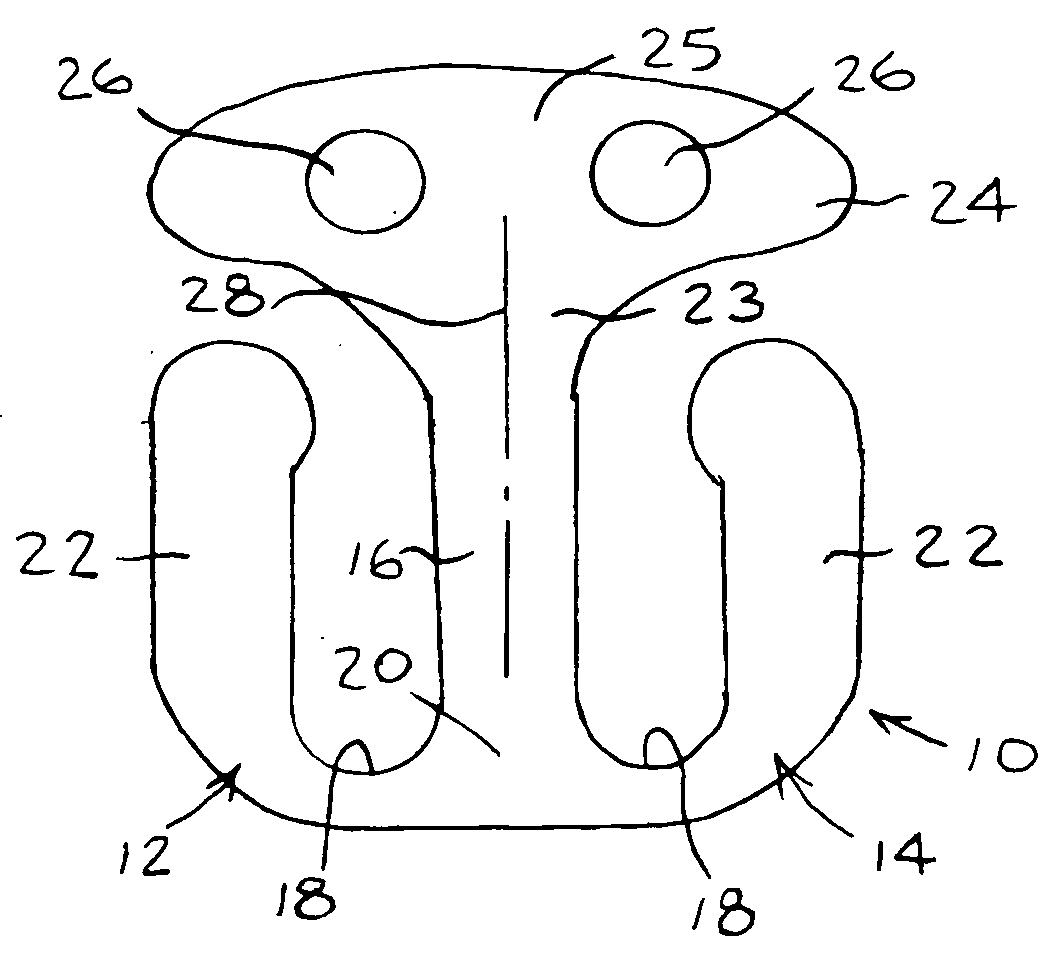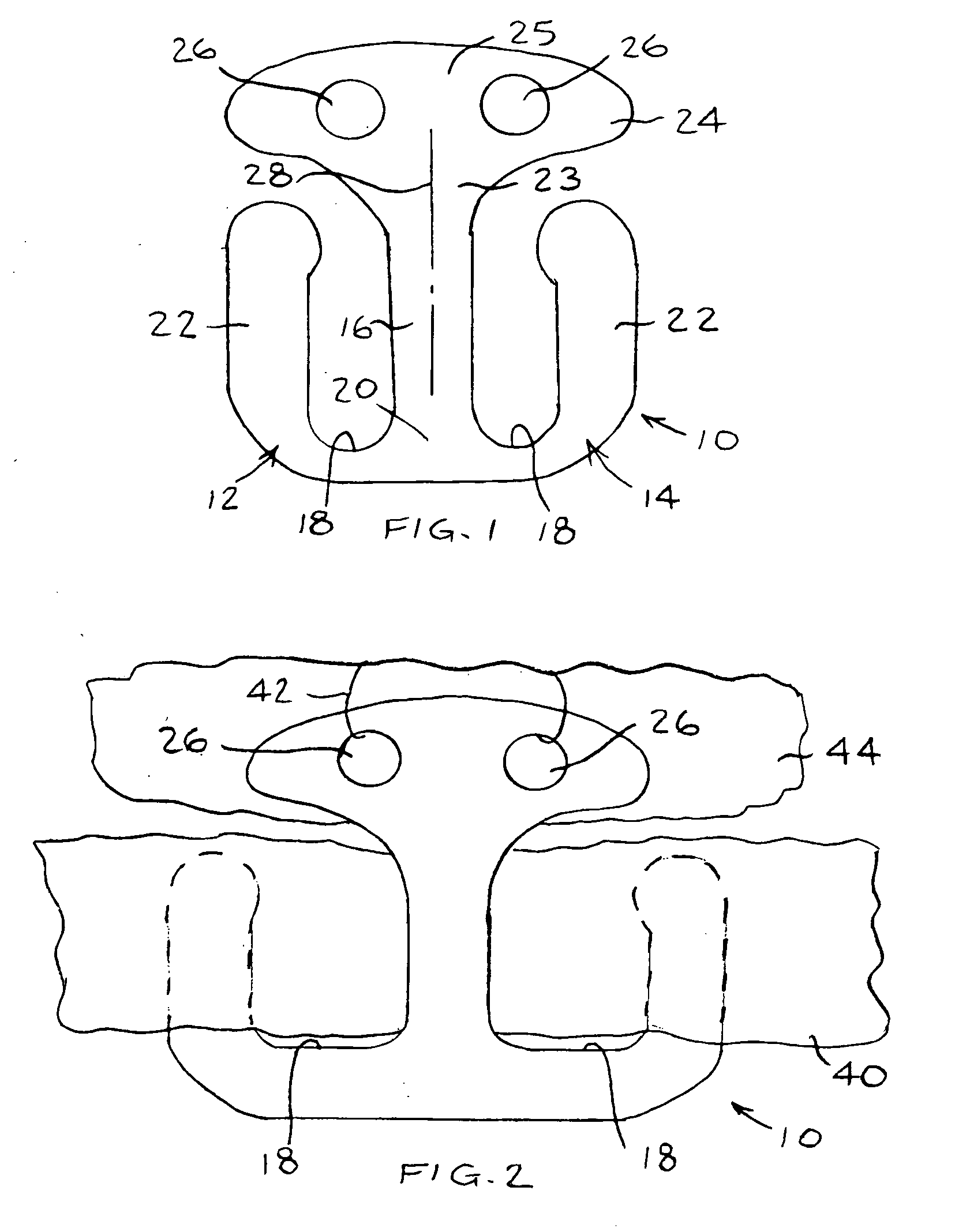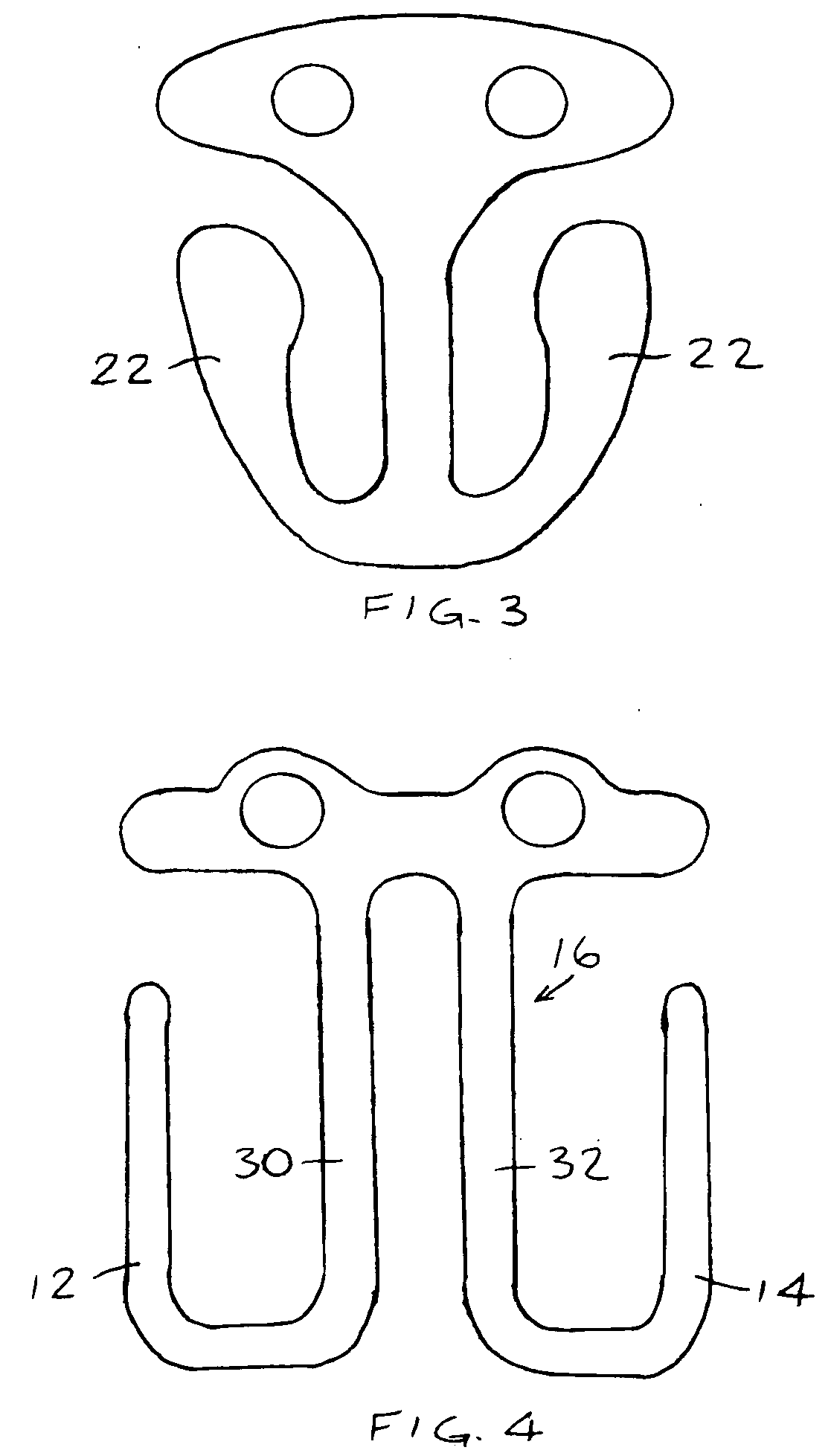Intraocular clip
a technology of intraocular lens and lens, which is applied in the field of eye implants, can solve the problems of unfavorable long-term iol centration and stabilization, uneven zonular tension and decentration of the lens, and jeopardize the integrity of the residual capsular bag
- Summary
- Abstract
- Description
- Claims
- Application Information
AI Technical Summary
Benefits of technology
Problems solved by technology
Method used
Image
Examples
Embodiment Construction
[0018] Reference is now made to FIG. 1, which illustrates an intraocular clip 10, constructed and operative in accordance with an embodiment of the present invention.
[0019] The intraocular clip 10 may include first and second hook members 12 and 14 extending in opposite directions from a spine 16. The first and second hook members 12 may be generally coplanar with spine 16. In the illustrated non-limiting embodiment, spine 16 is common to, that is, shared by both hook members 12 and 14. A curved crook 18 may be formed between each of hook members 12 and 14 and one end 20 of spine 16. Each of the hook members 12 and 14 may include arms 22 spaced from spine 16 on opposite sides of spine 16. In the illustrated non-limiting embodiment, the arms 22 are generally parallel to spine 16.
[0020] The intraocular clip 10 may be constructed of a biologically compatible material, such as but not limited to, polymethylmethacrylate (PMMA), silicone, silicone rubber, collagen, hydrogel, hyaluronic ...
PUM
 Login to View More
Login to View More Abstract
Description
Claims
Application Information
 Login to View More
Login to View More - R&D
- Intellectual Property
- Life Sciences
- Materials
- Tech Scout
- Unparalleled Data Quality
- Higher Quality Content
- 60% Fewer Hallucinations
Browse by: Latest US Patents, China's latest patents, Technical Efficacy Thesaurus, Application Domain, Technology Topic, Popular Technical Reports.
© 2025 PatSnap. All rights reserved.Legal|Privacy policy|Modern Slavery Act Transparency Statement|Sitemap|About US| Contact US: help@patsnap.com



